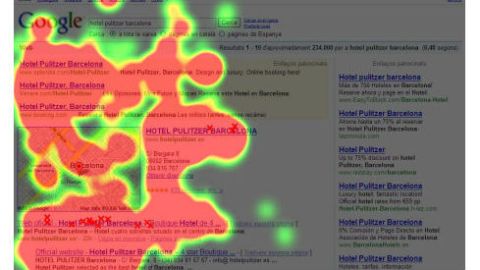CHOOSERS CAN’T BE BEGGARS: WHAT DO ONLINE DATING CONSUMERS REALLY LOOK FOR?

Now this is what I call post-romantic.
It begins with a fascinating vanguard of “neuromarketing” researchers. These scientist-marketers hook up subjects (consumers) to new biometric technologies such as EEG headsets that read brain waves and eye movements simultaneously; functional MRIs that highlight regions of high activity in the brain; and “steady state topography” sensors, which measure neural processing speed rather than the amplitude of activity that older imaging technologies capture. Neuromarketers might also deploy old stand-bys that monitor heart rate, respiration, and skin response.
Now that your body and brain are cozily entangled in the new machines, neuromarketers can measure your reactions to stimuli, whether a potato chip ad, a video or even a scent. The New York Times reports that companies such as CBS and Frito-Lay have used neuromarketing techniques to plumb consumers’ reactions to advertisements.
What does this have to do with love, you wonder.
AnswerLab, which provides neuromarketing insights and technology to their clients and is a leader in “interactive gaze technology,” released a study this week– a “field-based eye-tracking study” of online dating habits.
AnswerLab took their eye-tracking devices to a San Francisco café and had participants view different profiles from Match.com and eHarmony. Their technology allowed them to measure gaze patterns precisely, and to determine how much time each subject-consumer spent viewing different elements of each profile.
AnswerLab discovered that women are more “careful consumers” of, well, other humans—as potential mates. Women spent nearly 50% more time than men to assess whether someone’s profile might be a match.
Women spent an average of 84 seconds to evaluate a profile, and men spent only 58.
Not only do women spend more time assessing a mate, they also spend more time reading the profile.
Men, on the other hand, tended to focus on the photo. Men used up to 65% more time than women viewing the profile’s photo. Men spent an average of 5 seconds viewing a photo, and women, 3 seconds.
AnswerLab notes that these findings suggest the difference between “What People Said vs. What They Did.” Men and women alike said that they valued the same information, equally. But “gaze behavior” tells a different story. Male participants valued the photos and, presumably, physical attributes, notably more than women.
Another way to describe these findings is that they highlight the difference between reactions and thoughts about relationships.
A conventional survey about mate selection measures our thoughts—the things that we say we like, and may fully believe that we like. But these technologies measure our reactions, which sit closer to our instincts. Or, maybe our reactions in this context are like thoughts that have sedimented and become obdurate in our brains so that they act like instincts, the things that turn us on or bewitch us etched neurally through a lifetime of habit.
Neuromarketing also runs an end-game around the “pro-social” responses that bedevil social science— the subject’s mannered unwillingness to say something that would make them look bad socially, even in anonymous surveys.
For example, men who don’t want to seem superficial might not state that they spend the majority of their time scrutinizing a photo. Most women won’t say that they look for earning potential.
But our neurons and new social technologies betray us. A 2004 thesis out of the MIT Media Lab and its online dating project finds that by far the biggest predictors for getting more responses online, for men, were age, educational achievement—a strong proxy for earning power—and self-rated attractiveness. For women, the study found, as did AnswerLab, that looks mattered. The top three predictors for more responses were not being overweight, posting a picture, and self-rated attractiveness.
Freakonomics authors Steven Levitt and Stephen Dubner describe a similar study of online dating which found that half of white women and 80 percent of white men on the given site declared in a survey that race “didn’t matter” in their selections. But the actual data captured by their email queries from the site found that 97% and 90% of queries from these women and men, respectively, went to white prospects.
These aren’t the things we say that we choose. Even more interesting, they may not be the things we think we want to choose. This isn’t a case of hypocrisy, necessarily. But they’re the things we choose, nonetheless. The mouse, the gaze, and the “hits” don’t lie.
Anyone who’s been on a date knows that the preferences and feelings of a potential partner can be bafflingly inscrutable. But maybe our own preferences are also to some extent mysteries, to ourselves.
“The heart wants what the heart wants,” Emily Dickinson wrote. And in a somewhat less poetic moment from TheSopranos, Tony Soprano responds, “Yeah, and the heart wants what the dick wants, too.” Maybe Freud and Soprano were both wrong. The heart and dick both want what the neural pathways tell them to want, and they both do as they’re told by your gaze pattern. Only the neuromarketer knows…




